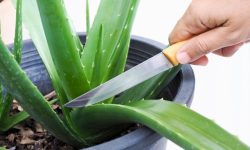Roses are timeless symbols of beauty and romance, and for many gardeners, having more of these stunning flowers in the garden is a dream. Learning how to propagate roses is one of the most rewarding ways to expand your rose collection without purchasing new plants. Propagation is not only cost-effective but also a way to preserve rare or sentimental rose varieties. With the right techniques, patience, and care, you can produce healthy new rose bushes that will bloom beautifully for years to come.
Understanding how roses grow naturally provides insight into why certain propagation methods work better than others. Roses reproduce through seeds, but gardeners often prefer vegetative propagation because it ensures the new plant retains all the desirable traits of the parent plant, including flower color, fragrance, and growth habit. By taking healthy cuttings and encouraging them to root, you can create strong, thriving plants that mirror the beauty of the original rose.
Understanding Rose Growth for Successful Propagation

To propagate roses successfully, you need to understand how they grow and develop. Roses produce stems called canes, which carry leaves, buds, and nodes. These nodes are critical points for propagation because they are where roots can develop when provided with the right conditions. Choosing a healthy cane with visible nodes is one of the most important steps in the propagation process.
Roses thrive in well-draining soil, bright sunlight, and consistent watering. During active growing seasons, especially in spring and early summer, the plant produces vigorous new canes filled with energy. These young, green canes are the best material for propagation because they root more easily compared to older, woody stems. The growth energy stored in these canes supports faster root development, which is essential for establishing a new plant.
Healthy mother plants produce the best cuttings. Avoid selecting canes that are diseased, infested with pests, or overly mature. A strong parent plant not only increases your chances of success but also ensures that the propagated roses inherit the vibrant characteristics you desire.
Choosing the Right Time to Propagate Roses
The timing of propagation plays a significant role in its success. The best time to propagate roses is during late spring to early summer when the plant is in its active growing phase. During this period, roses are producing new, semi-hardwood stems that are firm but not fully woody. These semi-hardwood cuttings are ideal because they contain enough stored energy to encourage rapid root formation while being flexible enough to handle well during the cutting process.
Avoid propagating roses during the peak of winter or late fall when growth slows and the plant enters dormancy. Cuttings taken during dormancy often fail to develop roots because they lack the necessary growth hormones that are abundant during the active growing season. Warm weather, mild humidity, and longer daylight hours during spring and summer create the perfect environment for successful rooting.
Preparing Healthy Rose Cuttings
Selecting and preparing healthy rose cuttings is crucial for successful propagation. Look for young canes with at least three or four leaf nodes and no signs of disease or insect damage. The best cuttings are usually about six to eight inches long with a thickness similar to a pencil. Using sharp and sterilized pruning shears ensures a clean cut, reducing the risk of introducing bacteria or causing damage that could hinder root development.
Once the cutting is taken, remove any flowers or buds to redirect the plant’s energy toward root growth. Leaving flowers on the cutting can slow down rooting because the cutting will continue to expend energy trying to support bloom development instead of focusing on root formation. Keeping a few healthy leaves near the top of the cutting is beneficial because they help with photosynthesis, which fuels the rooting process.
Some gardeners prefer to dip the cut end in rooting hormone to stimulate faster root growth. While not absolutely necessary, rooting hormone can significantly improve success rates, especially for beginner gardeners. The hormone provides the cuttings with auxins, natural plant hormones that encourage root initiation.
Rooting Roses in Soil
Soil propagation is the most common and effective method for rooting rose cuttings. The key is to use a light, well-draining potting mix that retains enough moisture to keep the cutting hydrated without causing rot. A mixture of garden soil, compost, and sand or perlite works well for maintaining the right balance of drainage and moisture retention.
Plant the cutting deep enough so that at least one or two nodes are buried under the soil, as these nodes are where new roots will emerge. Firmly pressing the soil around the base of the cutting ensures stability, which prevents unnecessary movement that could damage delicate developing roots. Water lightly after planting to settle the soil and maintain consistent moisture levels.
Providing the right environment is essential for successful rooting. Place the pot in bright, indirect sunlight to give the cutting enough light for photosynthesis while avoiding harsh direct sun, which could stress or dry out the plant. Maintaining high humidity around the cutting also encourages faster rooting. Covering the pot with a clear plastic bag or placing it in a mini greenhouse helps trap moisture, creating a humid microclimate similar to the natural environment roses thrive in.
Rooting Roses in Water
Some gardeners prefer rooting rose cuttings in water because it allows them to monitor root growth more easily. Place the prepared cutting in a clean jar or glass filled with room-temperature water, ensuring at least one or two nodes are submerged while keeping the leaves above the waterline. Using a transparent container helps you observe root development and detect any early signs of rot.
Change the water every few days to keep it fresh and oxygen-rich, as stagnant water can lead to bacterial buildup that damages the cutting. Place the jar in a bright, indirect light location, as too much direct sunlight can heat the water and stress the cutting. Rooting in water usually takes longer than soil propagation, but it is a rewarding process because you can see the roots forming before transferring the cutting to soil.
When the roots reach about two inches long, carefully move the cutting into a prepared pot with well-draining soil. Transitioning from water to soil should be done gently to avoid breaking fragile new roots.
Caring for Newly Rooted Rose Cuttings
After the rose cuttings have developed roots, proper care is essential to help them establish and grow into strong, healthy plants. Keep the young roses in a warm, bright location with indirect sunlight. Direct sunlight at this stage can be too harsh and may cause leaf burn or stress, especially if the plant is not yet fully established.
Water regularly to keep the soil evenly moist but never soggy, as excess water can lead to root rot. A good way to check moisture is by touching the soil; if the top inch feels dry, it’s time to water. Gradually expose the young plant to more sunlight as it grows stronger, eventually transitioning it to a full-sun location if the variety requires it.
Once new growth appears, it’s a clear sign that the rose cutting has successfully adapted. At this stage, you can start fertilizing lightly using a balanced, water-soluble fertilizer to encourage strong root and stem development. Avoid over-fertilizing early on, as young roots can be sensitive to high nutrient levels.
Encouraging Healthy Growth and Blooms
Ensuring that your propagated roses grow into healthy, blooming plants requires consistent care. Roses thrive with plenty of sunlight, nutrient-rich soil, and regular pruning. Providing support, such as stakes, helps young rose bushes grow upright and prevents damage from strong winds.
Pruning is essential not only for shaping the plant but also for encouraging better airflow and healthier growth. By removing dead or damaged leaves, you allow the plant to focus its energy on developing new shoots and flower buds. Regularly inspecting for pests and diseases is also crucial. Early detection and treatment with organic solutions like neem oil can prevent infestations from harming your young plants.
Roses are heavy feeders, so once the new plants are well established, feeding them with a balanced rose fertilizer promotes lush foliage and abundant blooms. Water deeply at the base rather than overhead to reduce the risk of fungal infections on the leaves.
Common Problems During Rose Propagation
Even with proper care, some cuttings may face challenges during propagation. Root rot is one of the most common issues, caused by overwatering or poorly draining soil. Ensuring proper drainage and moderate watering can prevent this problem. If you notice blackened or mushy stems, remove the affected cuttings immediately to prevent the spread of infection.
Slow or no root development can occur if the cutting does not receive enough light or if the temperature is too low. Roses need warm conditions to root successfully, so keeping the cuttings in a consistently warm environment accelerates growth. Yellowing leaves often indicate stress or nutrient deficiency, which can be corrected by adjusting watering practices and providing a mild fertilizer once roots are established.
FAQs About Propagating Roses
How long does it take for rose cuttings to root?
Rose cuttings usually take four to eight weeks to develop roots, depending on temperature, humidity, and the health of the cutting. Warmer conditions speed up the process.
Can you propagate roses in water?
Yes, roses can be propagated in water, although soil is generally more effective. Water propagation allows you to monitor root growth before transferring to soil.
What is the best time of year to propagate roses?
The best time to propagate roses is late spring to early summer, when the plant is actively growing and producing semi-hardwood stems suitable for rooting.
Do you need rooting hormone for rose propagation?
Rooting hormone is not required but can improve success rates by stimulating faster root growth, especially for beginners or harder-to-root rose varieties.
Why are my rose cuttings not rooting?
Slow or no root growth may be caused by low temperatures, insufficient light, or overly wet soil. Keeping the cutting warm, slightly moist, and in bright, indirect light encourages rooting.
Final Thoughts
Learning how to propagate roses is a rewarding process that allows you to expand your garden with stunning, healthy blooms. With the right techniques, careful preparation, and patience, you can successfully grow new rose bushes that replicate the beauty and fragrance of your favorite varieties. Whether you choose soil or water propagation, maintaining proper light, warmth, and humidity levels is essential for success.
Once rooted, your new roses will continue to thrive with regular care, including pruning, fertilizing, and monitoring for pests. Over time, these propagated roses will mature into strong, vibrant plants, filling your garden with color and fragrance. Propagation not only saves money but also allows you to preserve special rose varieties, making it a truly rewarding experience for any gardening enthusiast.






